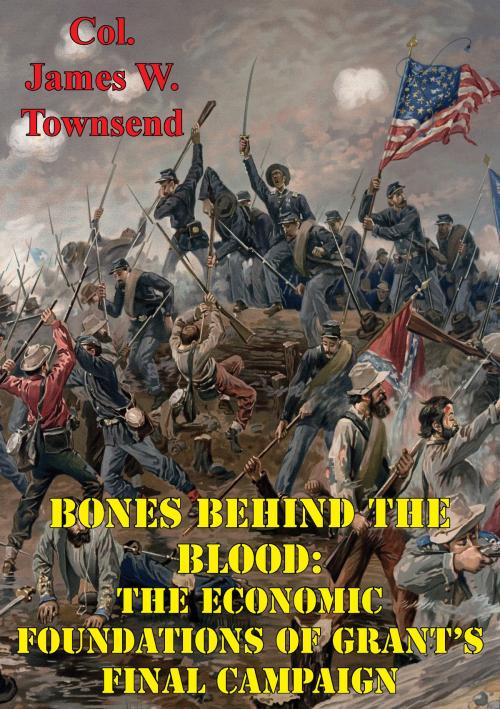Bones Behind The Blood: The Economic Foundations Of Grant’s Final Campaign
Nonfiction, History, Modern, 19th Century, Americas, United States, Civil War Period (1850-1877), Military| Author: | Col. James W. Townsend | ISBN: | 9781782899471 |
| Publisher: | Golden Springs Publishing | Publication: | November 6, 2015 |
| Imprint: | Golden Springs Publishing | Language: | English |
| Author: | Col. James W. Townsend |
| ISBN: | 9781782899471 |
| Publisher: | Golden Springs Publishing |
| Publication: | November 6, 2015 |
| Imprint: | Golden Springs Publishing |
| Language: | English |
This monograph explores the economic foundations behind General Ulysses S. Grant’s 1864-1865 campaign, the final campaign of the American Civil War. This paper will compare and contrast the economic conditions in the Union and the Confederacy with respect to manpower, social systems, finance infrastructure and industrial capacity. This will result in calculus of relative strategic power to analyze the strength and protracted military capability of the two belligerents.
The campaign was long and bloody—truly a campaign that destroyed vast resources in people and national treasure. While the fighting was both protracted and vicious, the outcome was never in doubt. Based upon a strategic calculus of power, particularly industrial capacity and economic power it was clear that the Union had a decisive advantage. While the South was primarily a traditional society with an agriculturally based economy, the North was in the stage of precondition for take-off fully on the road to industrialization. Simply stated the South could ill afford to use up resources in manpower, military equipment and treasure at a rate near equal to the North. General Grant’s final campaign was successful because it flowed from conditions set by a strong, vibrant economy and was guided by a strategy that thrived on this productive strength. Pressed into a corner due to Grant’s final campaign, the South was sure to lose.
This monograph explores the economic foundations behind General Ulysses S. Grant’s 1864-1865 campaign, the final campaign of the American Civil War. This paper will compare and contrast the economic conditions in the Union and the Confederacy with respect to manpower, social systems, finance infrastructure and industrial capacity. This will result in calculus of relative strategic power to analyze the strength and protracted military capability of the two belligerents.
The campaign was long and bloody—truly a campaign that destroyed vast resources in people and national treasure. While the fighting was both protracted and vicious, the outcome was never in doubt. Based upon a strategic calculus of power, particularly industrial capacity and economic power it was clear that the Union had a decisive advantage. While the South was primarily a traditional society with an agriculturally based economy, the North was in the stage of precondition for take-off fully on the road to industrialization. Simply stated the South could ill afford to use up resources in manpower, military equipment and treasure at a rate near equal to the North. General Grant’s final campaign was successful because it flowed from conditions set by a strong, vibrant economy and was guided by a strategy that thrived on this productive strength. Pressed into a corner due to Grant’s final campaign, the South was sure to lose.

![Cover of the book Analysis Of The Relationship Between Technology And Strategy And How They Shaped The Confederate States Navy [Illustrated Edition] by Col. James W. Townsend](https://www.kuoky.com/images/2014/august/300x300/9781782896067-yTa1_300x.jpg)








![Cover of the book Forty-Six Years In The Army [Illustrated Edition] by Col. James W. Townsend](https://www.kuoky.com/images/2015/november/300x300/9781786251350-EhDW_300x.jpg)



![Cover of the book Ordeal By Fire: An Informal History Of The Civil War [Illustrated Edition] by Col. James W. Townsend](https://www.kuoky.com/images/2016/january/300x300/9781786257789-EzyU_300x.jpg)
